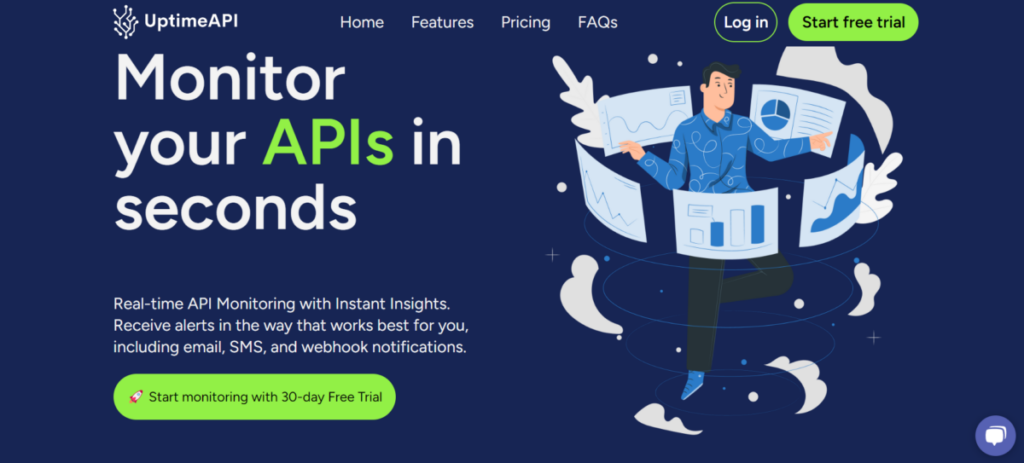In today’s fast-paced digital landscape, ensuring your APIs are always functional and responsive is crucial for maintaining seamless user experiences. This is where Uptime API steps in, offering robust solutions for Real-Time API Monitoring. Designed with developers in mind, Uptime API helps you keep your APIs running smoothly by providing instant insights into their performance and availability.
What is Uptime API? Best Real Time API Monitoring
Uptime API is a comprehensive tool for monitoring the health and performance of your APIs in real-time. It is designed to alert developers to potential issues before they impact users, ensuring that your API endpoints are always operational and delivering expected performance. The platform provides detailed metrics, including response times, error rates, and uptime statistics, which are crucial for troubleshooting and optimizing your APIs.
One of the standout features of Uptime API is its real-time monitoring capability. Unlike traditional monitoring tools that may offer delayed reports, Uptime API provides instant feedback on the status of your APIs. This immediacy helps in promptly addressing any performance hiccups or downtime, thereby minimizing disruptions and improving user satisfaction.
Getting Started with Uptime API: A Simple Tutorial
Step 1: Sign Up and Set Up Your Account
Begin by visiting the Uptime API website and signing up for an account. The process is quick and straightforward, requiring basic information to get you started.
Step 2: Configure Your API Endpoints
Once your account is set up, you’ll need to configure the API endpoints you want to monitor. Log in to your Uptime API dashboard and navigate to the ‘Add New Monitor’ section. Here, you can enter the details of the API endpoints you wish to track. Provide the URL, select the monitoring frequency, and configure any necessary authentication parameters.
Step 3: Set Up Alerts
To ensure you’re notified of any issues in real time, set up alerts within the Uptime API dashboard. You can customize alert settings to receive notifications via email, SMS, or other channels whenever an anomaly is detected. This feature ensures that you’re immediately aware of any issues that require attention.
Step 4: Analyze Performance Data
With your API endpoints configured and alerts set up, Uptime API will start collecting performance data. You can view detailed reports and analytics on the dashboard, including response times, error rates, and uptime percentages. Use these insights to identify trends, diagnose issues, and optimize your APIs for better performance.
Step 5: Integrate with Your Workflow
To further streamline your monitoring process, integrate Uptime API with your existing development and operations tools. Uptime API supports various integrations with popular platforms like Slack, Microsoft Teams, and other workflow management tools, allowing you to centralize your monitoring efforts and ensure consistent communication.
Conclusion
Incorporating Uptime API into your development toolkit provides a significant advantage in maintaining the health and efficiency of your APIs. By offering Real-Time API Monitoring, Uptime API enables developers to address issues swiftly, ensuring that your APIs deliver a reliable and seamless experience for users. The real-time insights and customizable alert features make it an essential tool for proactive API management. Start leveraging Uptime API today to keep your APIs running smoothly and enhance your overall application performance.


